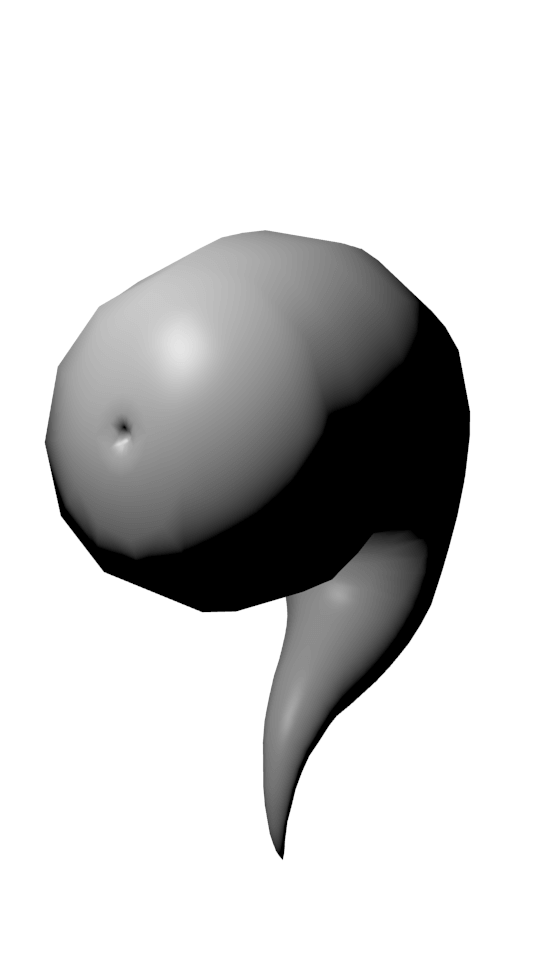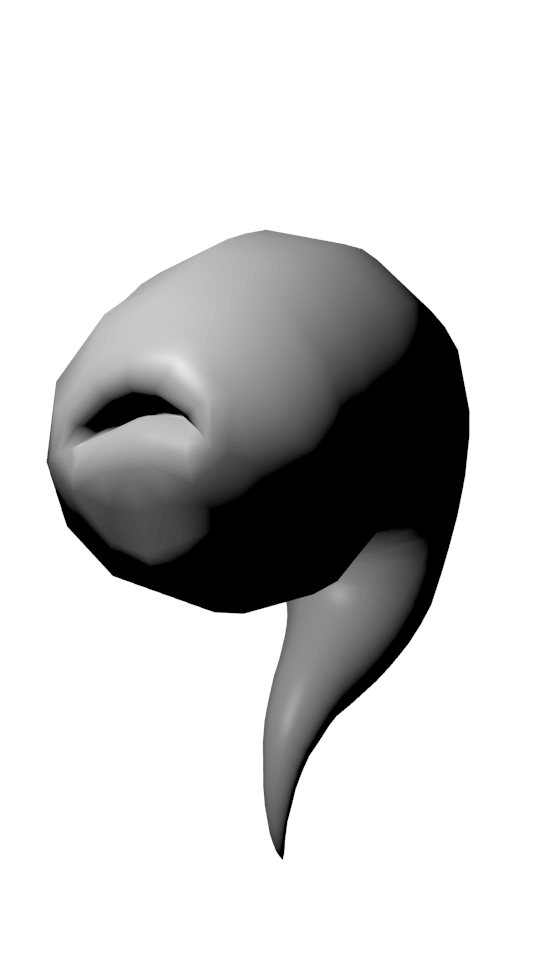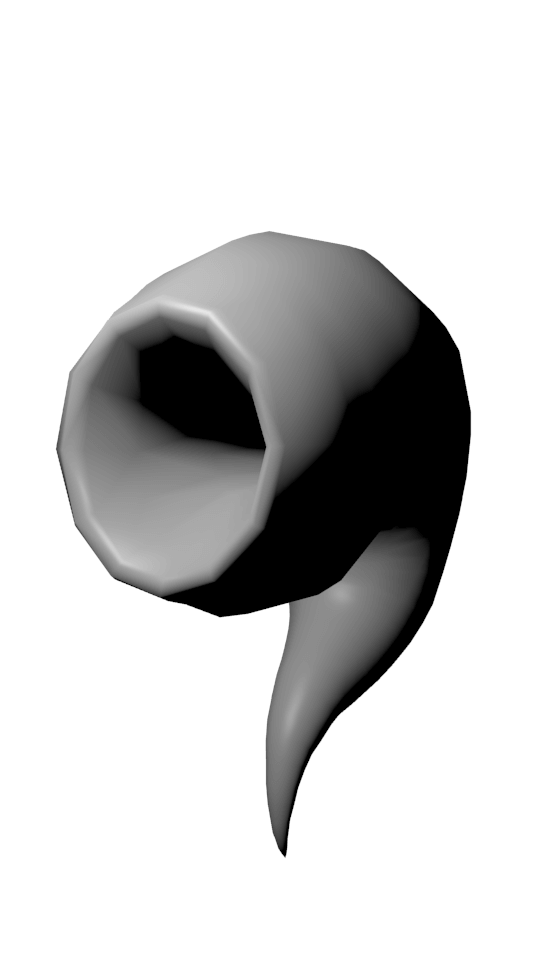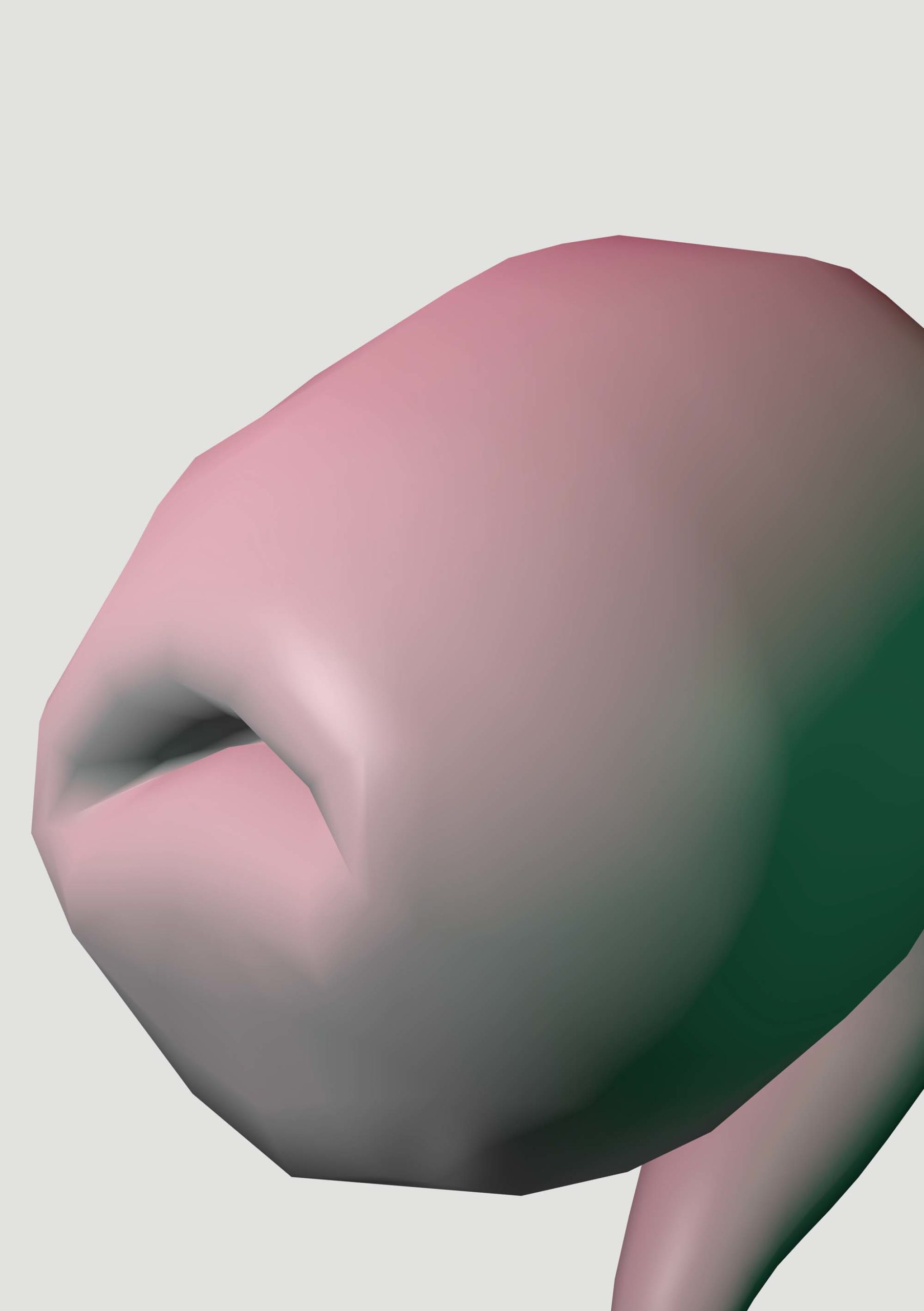Gleich und gleich und anders
2019
»Gleich und gleich und anders« (german for »same and same and different«) is a dating app for imaginary friends and my bachelor’s project. In Augmented Reality, the user can communicate and interact with their very own imaginary friend and get to know them.
Imaginary friends do not speak or understand language, so the duo of user and imaginary friend have to find ways to communicate nonverbally – through touch, proximity and sound. Additionally, imaginary friends, much like their human counterparts, have preferences and aversions which they want to see met – if not, the date might not end well.

Practical Background
»Gleich und gleich und anders« was made with Unity, the bodies of the Imaginary Friends were modelled in Blender.
The user is asked to answer some questions one could well find in a dating app. Based on their answers, some predictions about the users personality are made. Those predictions are in turn the basis for the Imaginary Friend and its personality – what it likes and what it dislikes, how it looks and how it carries itself. The Imaginary Friend is supposed to be as similar as possible to its user.
The Imaginary Friend possesses a list of traits, static and interactive ones. The static traits determine how the Imaginary Friend looks and how it acts on its own, while the interactive ones define its reactions to the user. For the Imaginary Friend to be believable, the Five-Factor Model of personality is used when deriving its traits from the users personality.
To make sure the user recognises and understands the personality expressed by the imaginary friend, a model of emotions is employed. My particular one follows a model of emotions also used by Kismet, a learning robot by Cynthia Brazeal.
Both the model of personality traits and the model of emotions are translated into scoring systems to then be able handle them in programming. Like this, the reactions and actions of the imaginary friend are derive from the personality of the user.



Theoretical Background
The most important inspiration for the theory behind »Gleich und gleich und anders« have been the Braitenberg vehicles, a thought experiment by Valentin Braitenberg from 1984. Braitenberg describes fictional robots with simple mechanisms that nevertheless show complex reactions to stimuli – they move to or away from them in complex patterns, depending on their electrical interconnection. He then imagines what also fictional observers would make of these robots – they would probably not only think of the underlying mechanisms as more complex than they are, but might also be tempted to describe the reactions of the robots in the terms of preferences and dislikes.
This effect is calles anthropomorphism: the human tendency to attribute human traits to nonhuman things. Further theoretical references concerning the anthropomorphisation of user interfaces specifically were the projects ELIZA by Joseph Weizenbaum and Kismet by Cynthia Brazeal, as well as the works of Sherry Turckle and Brenda Laurel. The theories of Disney animation experts Ollie Johnston und Frank Thomas and the work of Bryan A. Loyall were the basis for the character design of the imaginary friends.
You can download the whole theoretical work »Gleich und gleich und anders« in german here.
